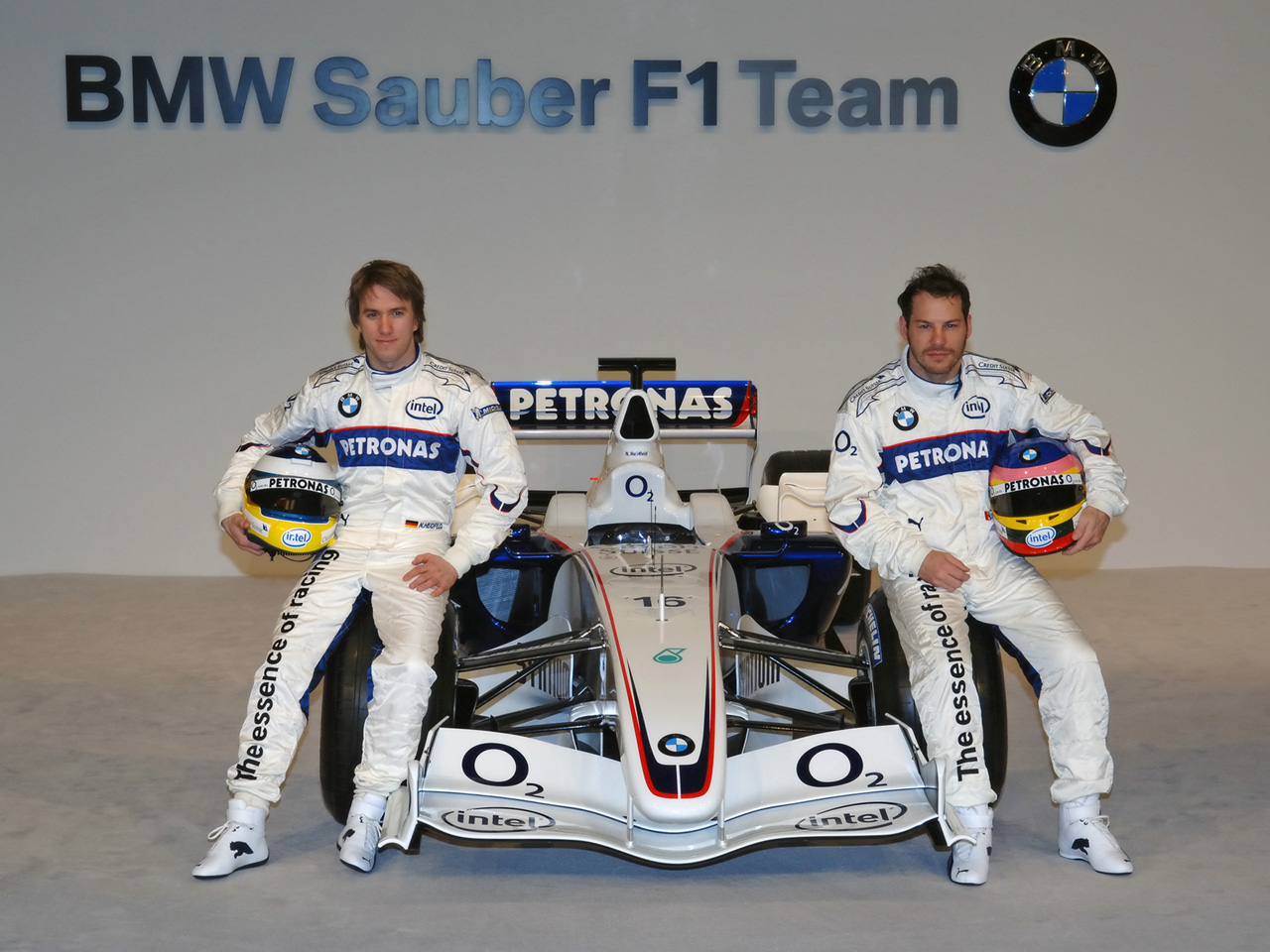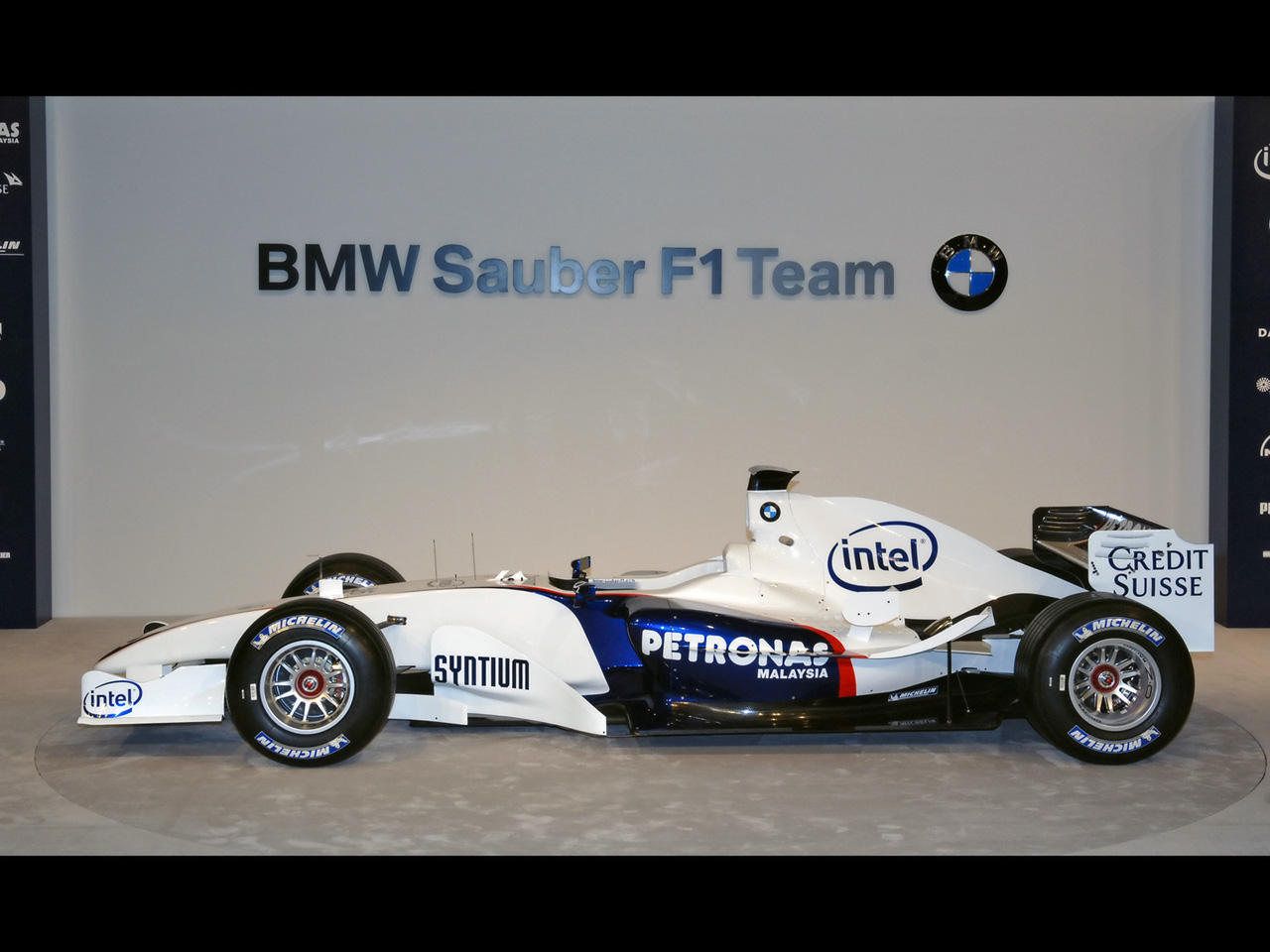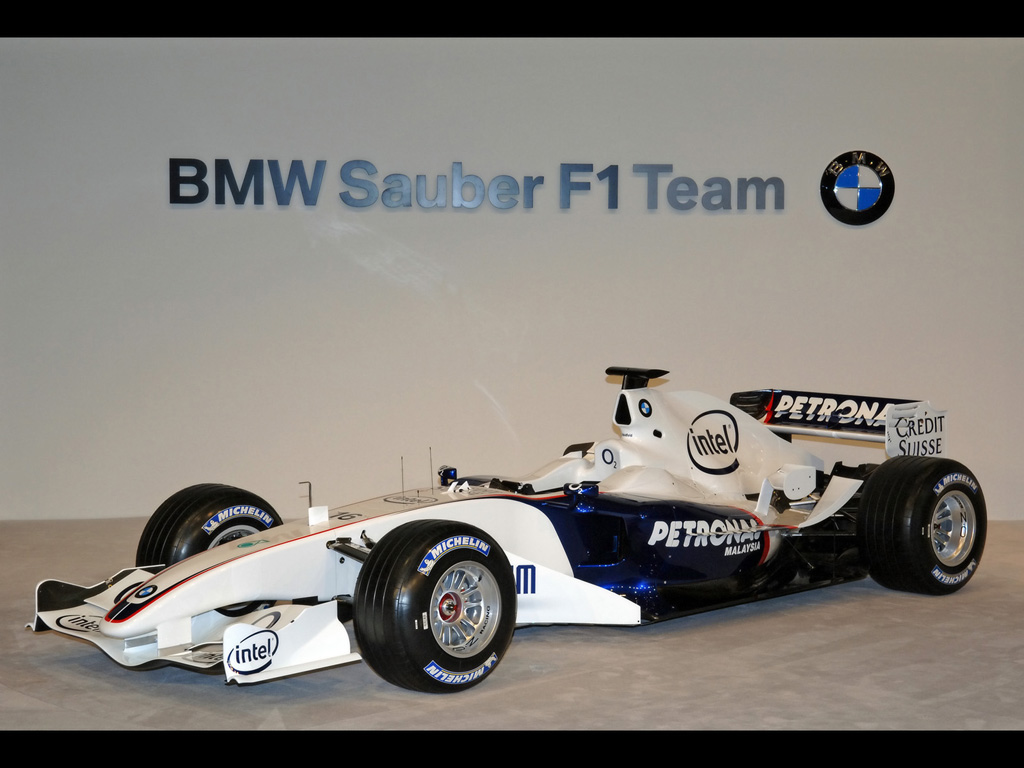BMW Sauber F1.06
On 12th March 2006
in Bahrain, the BMW Sauber F1 Team will launch its
first season with the BMW Sauber F1.06, driven by Nick Heidfeld and Jacques
Villeneuve.
As Professor Burkhard Göschel,
BMW Board Member for Development
and Purchasing, points out: “This project represents a strong, long-term
commitment to Formula One on BMW’s part. For the BMW Group,
Formula One acts as a high-tech laboratory and technology accelerator.
This synergistic effect has already had a very positive impact in our six years
as an engine partner. But you can’t win races with an engine alone, which
is why we wanted to be involved in all the success factors. In keeping with
that, we have now taken on overall responsibility. Formula One seems
tailor-made for BMW’s brand values, and there’s no other sporting event that
generates so much attention on such a regular basis worldwide. In 2006 we will primarily
be building up experience. In 2005 Sauber came eighth in the Constructors’
World Championship. That is our starting point, and I can see plenty of upside
potential.”
“To set up a new team is a huge challenge”, says Professor Mario Theissen, who as BMW Motorsport Director oversees all of BMW’s racing involvements. “Our concept includes boosting staff numbers, expanding the facility in Hinwil, an intensive development programme and the networking of all activities in Munich and Hinwil. The division of labour is as follows: Munich is in charge of the powertrain and electronics, Hinwil is responsible for the chassis and race deployment. We will be recruiting more than 100 new staff in Switzerland.
The key priorities will be to convert the wind tunnel from single to
three-shift operation as well as setting up an autonomous test team. The Hinwil
wind tunnel is outstandingly good. Overall, the factory is good but not yet big
enough. The extension plans, which include new offices as well as development and
production facilities, have been drawn up and we expect planning permission to
come through in spring of 2006. All measures
will be fully implemented by the end of 2007. The 2006 season will be a year
of development. That also applies to the technical package, whose
concept was already largely established in Munich and Hinwil before the
takeover. In 2006 we aim to grow together and maximise our potential.”
After
13 years as a team principal in Formula One, Peter Sauber has stepped back from
the operational side of the business. Now 62, he will act as
advisor to the new team. “I was delighted that Sauber is to remain part of the
team name. I shall be keeping a close eye on the progress of the
BMW Sauber F1 Team. I’m especially pleased for the staff in Hinwil, who will
now have the opportunity to demonstrate their skills with the support of
their colleagues from BMW.”
Two adoptive Swiss in the cockpit.
They’ve long known each other,
they’ve both raced for Sauber before,
they both live in Switzerland – but they’ve never before been team-mates.
Drivers Nick Heidfeld and Jacques Villeneuve can look back on a combined tally
of 250 grands prix.
Heidfeld (28) made his Formula
One debut at the start of the 2000 season and competed for the Swiss racing
team from 2001 to 2003. His best results so far are the two second places he
claimed for the BMW WilliamsF1 Team
in the 2005 season. He also took a pole position in the same year. The man from
Mönchengladbach, whose daughter – and first child – was born in July 2005, has
98 race starts under his belt.
“I’m really looking forward to the new season and the
new team, many of whom I already know from years past”, says Heidfeld.
“Besides, I can get to Hinwil in 15 minutes by car, which is a real advantage.
It’s natural for a racing driver to be impatient when it comes to achieving
success, but we need
to be realistic. For me the most important thing is that we’re moving in the
right direction. We have to work hard and make steady progress.”
No
other driver in Formula One has risen to World Champion status as rapidly as
Jacques Villeneuve. In 1996, his debut year, the Canadian already finished as
runner-up behind his then Williams-Renault team-mate Damon Hill.
Then in 1997 he beat Michael Schumacher to the title for Williams-Renault.
In 152 grands prix he has taken eleven victories and claimed pole 13 times.
After
five years with the BAR team, it seemed his F1 career was over in 2003. But
then he was given the chance to compete in the final three races of season 2004
for Renault. In 2005, the son of the famous Ferrari driver Gilles Villeneuve
was signed up by Sauber.
“Building up a new team is a very complex task”, says Villeneuve looking ahead to 2006. “I’ve already been through it in the past. But I think we’ve got a number of good prerequisites coming together here. I’ll be doing my very best to help the BMW Sauber F1 Team achieve success.”
New regulations.
The most radical technical changes for 2006 affect the
engines:
Formula One is switching from three-litre V10 engines to V8 units with
2.4 litres’ displacement. The rules governing the new engines are far more
tightly regulated and the scope for engineers has shrunk. The switch
to the more compact V8 powerplants also brings with it noticeable modifications
to the chassis. Among other changes, the cars will feature pared-down sidepods
as the radiators can now be designed smaller
than before.
Racing fans can again look forward to the spectacle of
tyre changing in the pits, which has the go-ahead again as of 2006. The
qualifying format is also new: for the 2006 World Championship, grid positions
will be determined in a shootout. From 14.00 to 15.00 hrs on Saturday, the fast
laps will be driven in three time sections, with the slowest drivers in the
first two 15-minute periods taking no further part in qualifying, leaving the
remaining drivers to compete for the best starting positions in the final
session.



